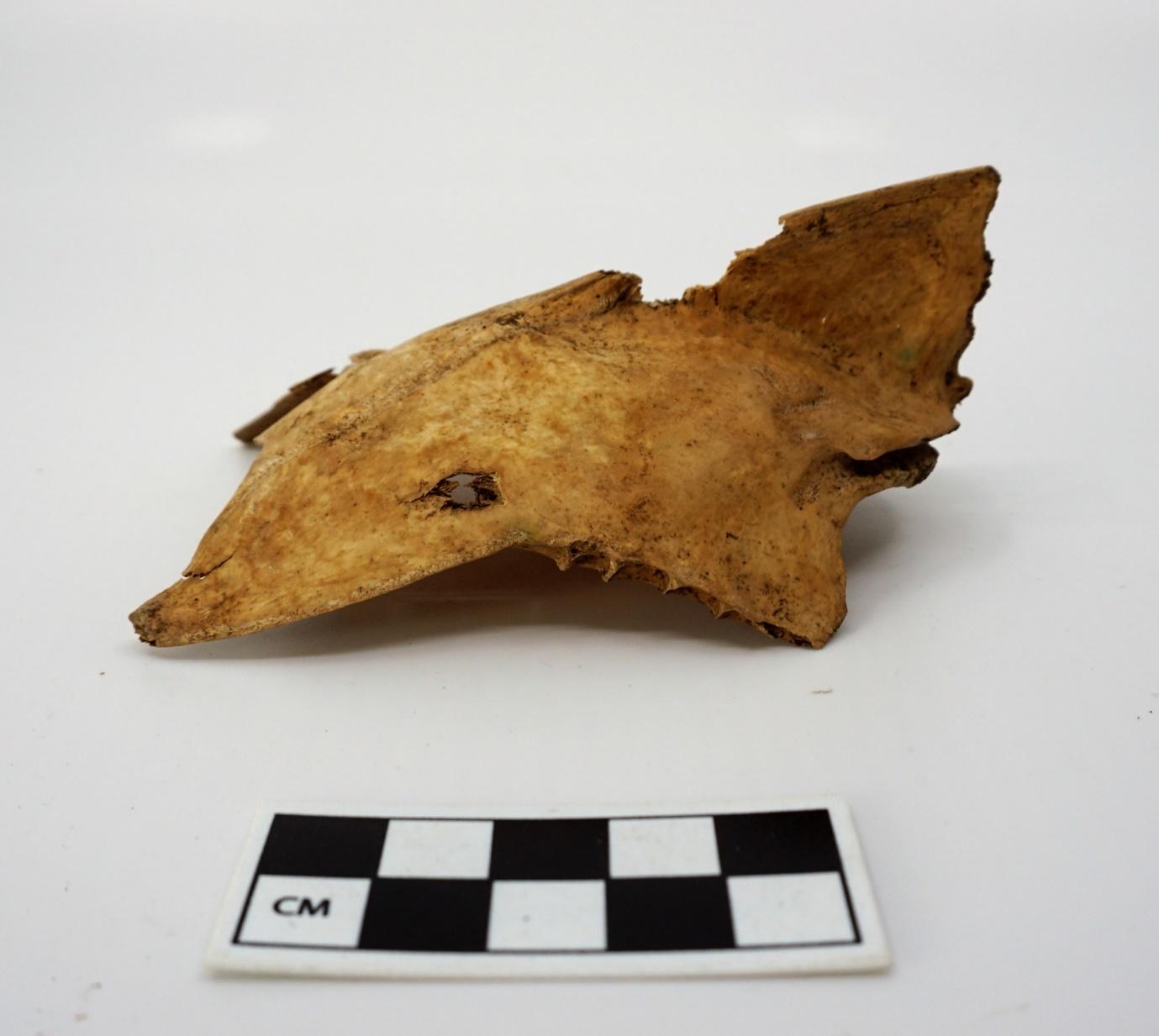
3 minute read
Discussion
There are only a few sites with animal bones, dating to the 20th century, which have been
thoroughly analysed and published from Iceland. A small animal bone collection was
recovered during test trenching in “Þorpið” on the southeast side of Viðey island off the coast of Reykjavík in 2011 (Elín Ósk Hreiðarsdóttir & Lucas, 2014). The village was founded in 1907
by “Milljónafélagið” which swiftly began construction of a pier, worker housing and buildings for fish processing and the site remained active until 1943 (Elín Ósk Hreiðarsdóttir & Lucas,
2014). Refuse layers were the target of the excavation of Þorpið in contrast with Litlibær where both structures and their surrounding areas were excavated (Elín Ósk Hreiðarsdóttir &
Lucas, 2014; Lucas et al., 2019).
A total of 1176 animal bones, teeth and shells from roughly the same time period as
the material from Litlibær were identified from the site in Viðey (SBK11) (Leifsson, n.d.). The
collection was also handpicked not sieved but due to lack of a good bird bone reference
collection the bird bones were not identified to species (Leifsson, n.d.). Over half of the
animal remains from SBK11 was burnt most likely as a way to get rid of trash rather than due
to cooking of meat (Leifsson, n.d.). This fits well with recollections of people who grew up in
Þorpið as they recall the majority of trash being burnt and used as fertilizer for cabbage patches (Elín Ósk Hreiðarsdóttir & Lucas, 2014). Butchery marks were only recorded on 11
specimens from SBK11, on medium and large mammal bones and a single shell. No butchery
marks were observed on the bird bones from the site. None of the butchered bones from
SBK11 were sawn and no knife marks were recorded either (Leifsson, n.d.). This is very
different from the material found at Litlibær which had a rather high incidence of butchery
marks and little evidence of burning.
No goat bones were recorded at SBK11 but nine sheep bones in addition to 134 bones from sheep/goat. A single cattle bone, three horse bones were identified in the material and
a single possible domestic fowl bone. The fish bone from SBK11 included cod, haddock, plaice
and gadid family bones with a total of 196 fish bones recorded (Leifsson, n.d.). Due to the
high rates of burning and fragmentation levels of the SBK11 collection (Leifsson, n.d.) the
identification rates of the material are much lower than at Litlibær. The taphonomy of the
two collections is clearly quite different which obscures direct comparisons of the two
archaeofaunas when it comes to species composition and butchery. They do seem to reflect
quite different treatment of animal refuse and the dominance of mammal bones in the
SBK11 collection contrasts (Leifsson, n.d.) with the higher ratio of fish bones found at
Litlibær. At SBK11 there is rather clear evidence of sheep farming with elements from all of
the skeleton recovered as well as bones from young individuals (Leifsson, n.d.). This is also
the case at Litlibær where bones from all parts of the sheep skeleton were recovered as well as neonatal sheep/goat bones.
90%
80%
70%
60%
%TNF
50%
40%
30%
20%
10%
0% 78%
39%
Mammals 42%
17%
Fish 19%
2%
Birds SBK11 - Viðey
Litlibær
4%
0%
Molluscs
Figure 28: Graph of %TNF per taxon from the sites of SBK11 – Viðey and Litlibær.
The numbers of species identified at Litlibær is much higher than at SBK11. This is
partially due to taphonomic factors and the fact that the bird bones from SBK11 were not
identified to species (Leifsson, n.d.) but also likely reflects a broader subsistence base at
Litlibær than at SBK11. No marine mammal bones were identified in the SBK11 collection
(Leifsson, n.d.) but at Litlibær bones from a small cetacean, likely harbour porpoise and
juvenile seals were found with butchery marks indicating consumption. There were no rat
bones or rodent gnaw marks found at SBK11, possibly the location of SBK11 meant that rats
had a much harder time establishing there than at Litlibær which was close to the refuse
dump of the Reykjavík area.








